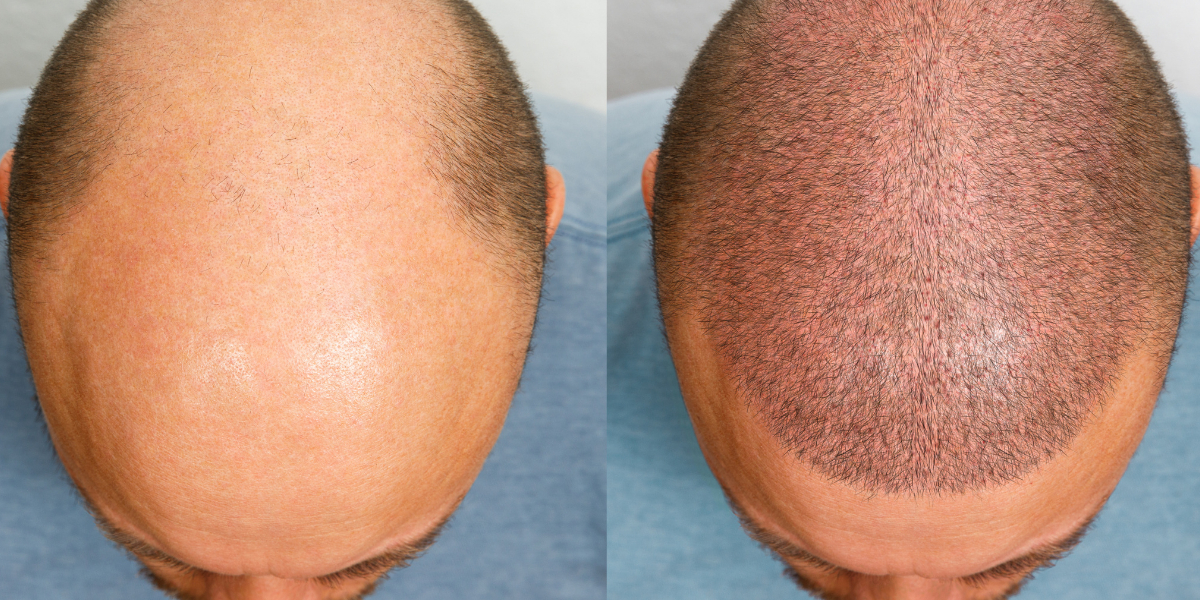Best Age for Hair Transplant Surgery

Hair loss is a common problem that affects both men and women. For many people, losing hair is stressful and impacts their confidence. Modern medical care now offers effective solutions, and one of the most popular options is hair transplant surgery. But before deciding on this step, many people wonder: what is the best age for a hair transplant?
At MEDITRAVEL, al. Jana Pawła II 27, 00-867 Warszawa, Poland, we meet patients who ask this question every day. The answer is not the same for everyone because age, health, and the pattern of hair loss all matter. In this article, we will explain everything in detail so you can make an informed choice.
Understanding Hair Transplant Surgery
A hair transplant is a medical procedure where hair follicles are moved from one part of the body (usually the back or sides of the scalp) to an area with thinning or no hair. This allows natural growth in the treated area over time.
There are two main techniques used today:
- FUT (Follicular Unit Transplantation): A strip of scalp is removed and divided into grafts.
- FUE (Follicular Unit Extraction): Individual hair follicles are taken one by one.
Both methods are safe and give permanent results when performed by trained doctors. Recovery is usually quick, and within a year, most patients see their final results.
Why Age Matters in Hair Transplant
When thinking about the right time for surgery, age is an important factor. This is because hair loss patterns change over time. A person in their early 20s may still be losing hair quickly, while someone in their late 30s may already have a more stable pattern.
If surgery is done too early, new hair may look good at first but later areas of natural hair may keep thinning. This creates an unnatural look. On the other hand, waiting too long may mean more hair is lost, leaving fewer donor hairs to use.
So, finding the right balance is key.
Hair Transplants in Your 20s
Many people first notice hair loss in their 20s. Male pattern baldness often begins at this age. Understandably, this can feel alarming and may lead to thoughts about surgery.
Pros of having a transplant in your 20s:
- Early action may restore confidence.
- Results may look youthful and natural.
Cons of having a transplant in your 20s:
- Hair loss may not yet be stable.
- More surgeries may be needed later.
- Risk of unnatural appearance if hair continues to thin.
Doctors often suggest waiting until the hair loss pattern becomes clearer. In many cases, non-surgical treatments such as medications or lifestyle changes are recommended first.
Hair Transplants in Your 30s
The 30s are often considered one of the best times for hair transplant surgery. By this age, many people have a more stable pattern of hair loss, and doctors can predict future thinning more accurately.
Why your 30s are a good age:
- Hair loss pattern is usually clearer.
- Donor hair is often still thick and healthy.
- Emotional maturity helps in making long-term decisions.
Patients in this age group often enjoy excellent results that last for many years.
Hair Transplants in Your 40s
The 40s are also a very good time for surgery. At this stage, most patients know how their hair loss has developed and can plan for a natural result.
Benefits in your 40s:
- Hair loss is usually very stable.
- Donor hair is still strong.
- Long-lasting natural results are possible.
In fact, many surgeons report that patients in their 40s often achieve the most predictable outcomes.
Hair Transplants in Your 50s and Beyond
Some people believe hair transplants only work for younger patients, but this is not true. Many successful surgeries are done on patients in their 50s and even 60s.
Key points for older patients:
- Donor hair must still be healthy.
- General health should be good for surgery.
- Results may take longer to show, but they can still look natural.
Age alone is not a barrier. If you are healthy and have strong donor hair, surgery can still be a great choice.
Factors Beyond Age
While age is important, it is not the only factor to consider. Doctors also look at:
- Family history of hair loss – This helps predict future patterns.
- Donor hair quality – Thick, healthy hair at the back of the head is ideal.
- Overall health – Conditions like diabetes or heart problems may affect surgery.
- Expectations – Patients need to understand what is possible.
This is why a full consultation is so important before deciding.
Best Age Summary
To summarize:
- Early 20s: Not always ideal. Hair loss may not be stable.
- Late 20s to 30s: Often the best age for long-lasting, natural results.
- 40s: Also excellent, with stable patterns and strong donor hair.
- 50s and beyond: Still possible, if health and donor hair are good.
So, while there is no single “perfect” age, most people achieve the best balance of safety and results between their late 20s and 40s.
What to Expect Before and After Surgery
If you decide to move forward, here is what the process usually looks like:
Before surgery:
- A full consultation with your doctor.
- Tests to check health and hair condition.
- A treatment plan designed for your needs.
During surgery:
- Local anesthesia is used (you are awake but feel no pain).
- Hair follicles are removed from the donor area.
- They are placed in the thinning area carefully.
After surgery:
- Some redness and swelling for a few days.
- Scabs fall away within 2 weeks.
- New hair starts to grow in 3–4 months.
- Final results appear in 9–12 months.
How to Make the Best Choice
Choosing the right time for a hair transplant is personal. You should consider:
- Your age and hair loss stage.
- Your health condition.
- The advice of an experienced surgeon.
At MEDITRAVEL in Warsaw, Poland, our team is here to guide you. We look at your unique case and explain all options.
Tips for Younger Patients
If you are in your early 20s and worried about hair loss, surgery may not be the first step. Here are other options:
- Medication: Finasteride and minoxidil can slow hair loss.
- Lifestyle changes: Better diet, less stress, and good sleep can help.
- Regular monitoring: Visiting a specialist helps track changes.
By waiting until your hair loss pattern is stable, you can avoid extra surgeries in the future.
Long-Term Outlook
The great news is that hair transplant surgery offers permanent results. Once the transplanted hair grows, it usually stays for life because it comes from the resistant donor area.
Still, natural hair around the transplant may continue to thin. That is why careful planning and sometimes combining surgery with medical treatments is recommended.
Final Thoughts
So, what is the best age for hair transplant surgery? The answer depends on the individual. For most people, the late 20s to 40s provide the best balance of stable hair loss patterns and strong donor hair. But even if you are older, you may still be a good candidate.
At MEDITRAVEL, al. Jana Pawła II 27, 00-867 Warszawa, Poland, we are committed to giving honest advice and safe, lasting results. If you are considering this step, the best way forward is to schedule a consultation. Together, we can plan the right treatment for you.



